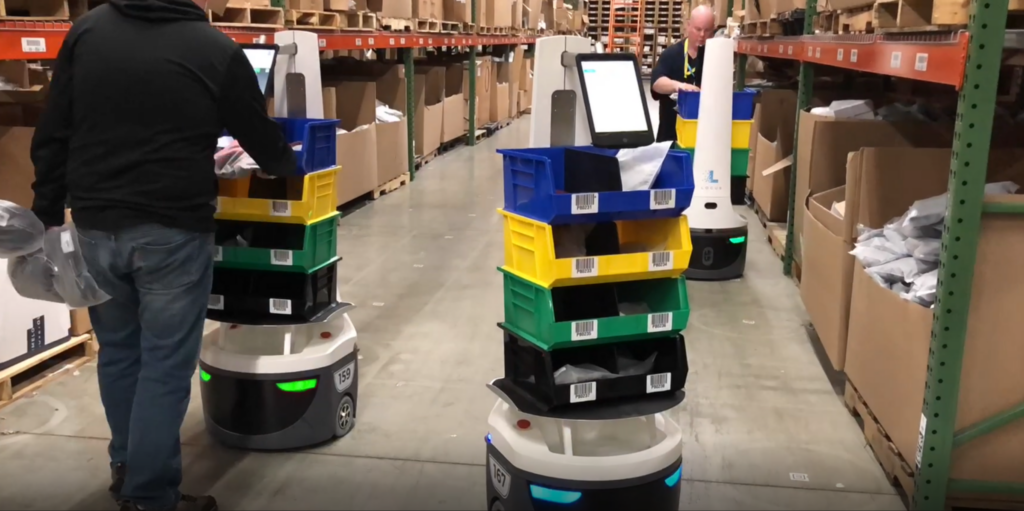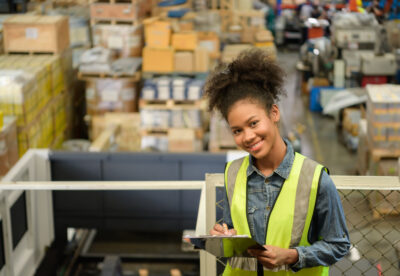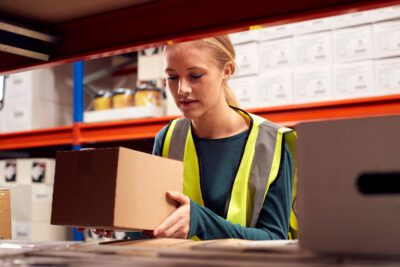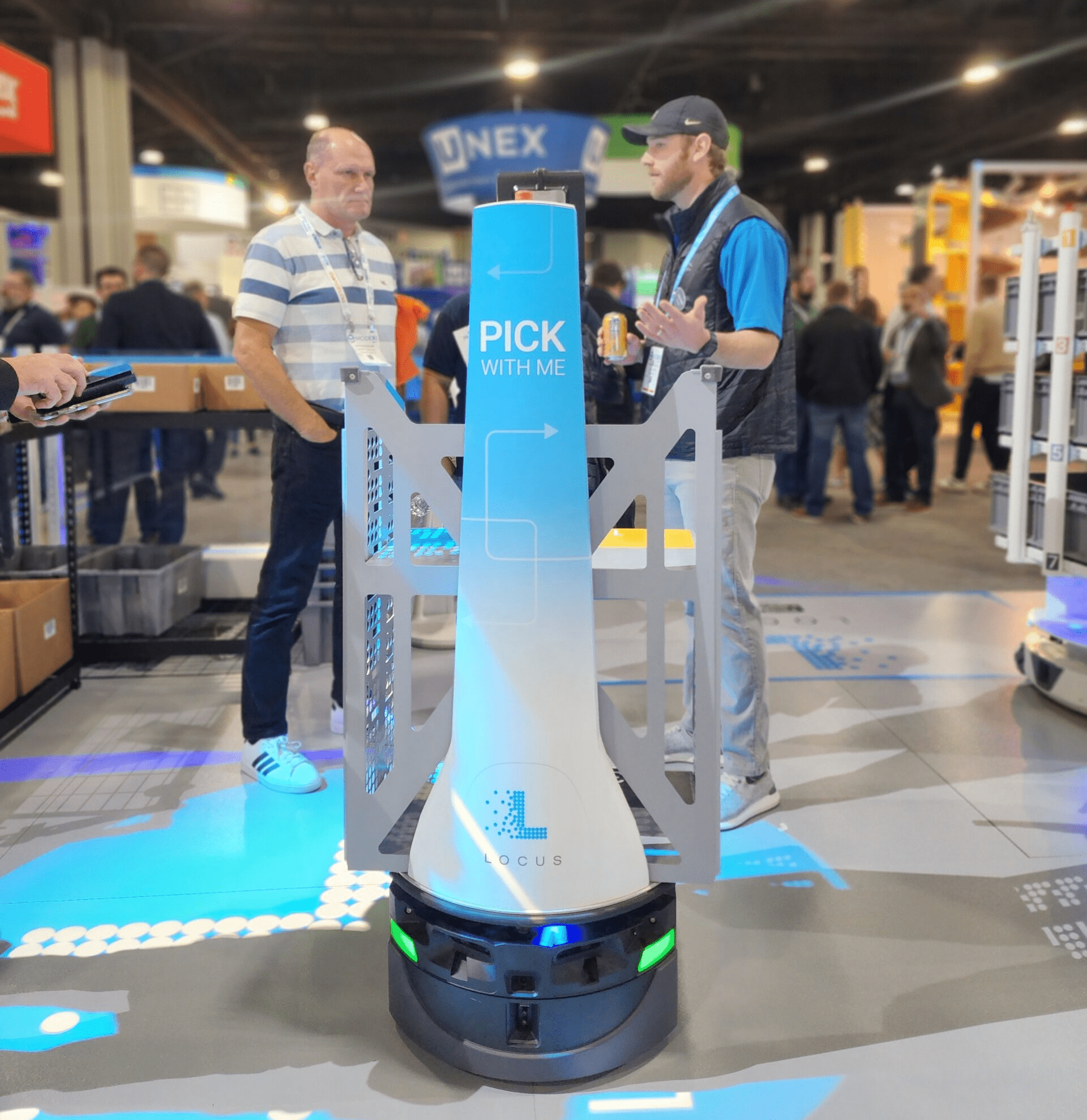Webinar Registration: The P2G Advantage
Webinar Registration: The P2G Advantage LEARN MORE
How to Handle Returns Efficiently with Warehouse Robotics
Mary Hart, Senior Content Marketing Manager

As online orders stay at high volumes, even with more people shopping in-store, the volume of goods returned to retailers also remains at high levels. Retailers expected to see more than $816 billion worth of retail merchandise sold during the 2022 holiday season returned, according to a report from Appriss Retail and the National Retail Federation.
Even during the non-holiday months, return levels are still high. Consider that when a person is online shopping, they may not be able to easily determine the sizing of a pair of pants. Since they’re not trying on the pants in-store, they instead buy the pants in two or three different sizes and then return the ones that don’t fit, or even all three pairs if none of them fit the right way.
With return volumes continually increasing, it’s time to consider how you’re going to handle all of those returns and how robotics can help.
How a Standard Returns Process Work
There are five steps to a standard returns process, which is also known as “reverse logistics”:
- The consumer returns the item either to the store or mails it back
- Those goods are transported to your warehouse
- You receive or intake the returns into your warehouse
- You have to assess the condition of the returns and sort the items into the next steps (Does the item have to be thrown out? Can it be recycled? Can it be resold?)
- You have to put away the items that are going to be resold into your warehouse inventory
Once the items have been returned by the consumer, they are going to arrive at your warehouse by truck. According to a Supply Chain Brain article, processing that truckload of returns takes 6x to 24x more time than processing a truck of other goods that haven’t been returned.
Each one of those returned items costs your warehouse an average of $10 to receive and process due to the time to assess the condition of each item; update your inventory system; and then put away the returns that can be resold.
If your company works with a third-party liquidator to sell returned and/or slightly damaged items, the reverse logistics process has an extra step of managing that partnership and getting the returned items ready to go back out to the liquidator for resale.
But in a standard warehouse, the reverse logistics process is as above, with human associates assigned to either picking or returns (also known as “putaway”). Each returns associate is tasked with carrying heavy items, or pushing/pulling heavy carts, up and down the aisles of your warehouse to bring returned goods to be put back into the picking shelves.
All of that walking, which can be up to 12 miles a day, is grueling for an associate, and isn’t productive because the associates that could be spending time putting items away are instead walking.
There’s a better way. Our autonomous mobile robots (AMRs) will transport the items throughout your warehouse, leaving the human associates to be able to put away more returned items and speed up the process. You can further improve your warehouse operations by having your associates focus on both picking and returns instead of one or the other.
Picking and Returns in One
As a best practice, human workers can work on both picking and returns (or “putaway”) in your warehouse to increase efficiency. This is known as an “interleaved” workflow with both tasks being performed by the same pool of human workers concurrently. The workers go to the closest robot and perform the task required by that robot, which can be picking or returns.
More warehouses are choosing a task interleaving workflow because the human workers are already in the aisles that handle both use cases. This approach increases task density, minimizes the distance between robots, and decreases walk time, which increases the efficiency rates for both picking and returns in your warehouse.
With this approach, labor-challenged companies can also avoid the need for a separate overnight shift that focuses only on restocking and putaway and instead optimize their existing workforce.
How Locus Makes Returns Easy
Return processing is essentially reverse picking with the opposite process occurring. With returns, AMRs bring the goods to the human worker to be put away rather than the human worker meeting the AMR and placing the goods on the bot to be transported to the next task.
- Returned goods are received by your facility.
- Your facility reviews and sorts returned goods.
- Returned goods to be putaway are sent to a holding location until the task is activated in the system.
- When the task is ready, the returned item, container, or case to be put away is scanned and placed onto the robot, who then takes it to a human near that location.
- For the human worker, the display screen shows the location, license plate, item UPC, and picture for the item or carton to be put away.
- The worker puts the carton or the individual units away.
- The worker places the empty carton on the robot for disposal.
- The robot travels to the drop off location. Empty cartons are disposed of and a new picking or returns process begins.
Locus Robotics can help you make the returns process easier by carrying returned goods both large and small (up to 3,000 pounds with Locus Max!) for put away by your human associates.
Want to find out how the Locus Solution can help you improve your warehouse productivity?
Talk to us and we’ll tell you more! "





